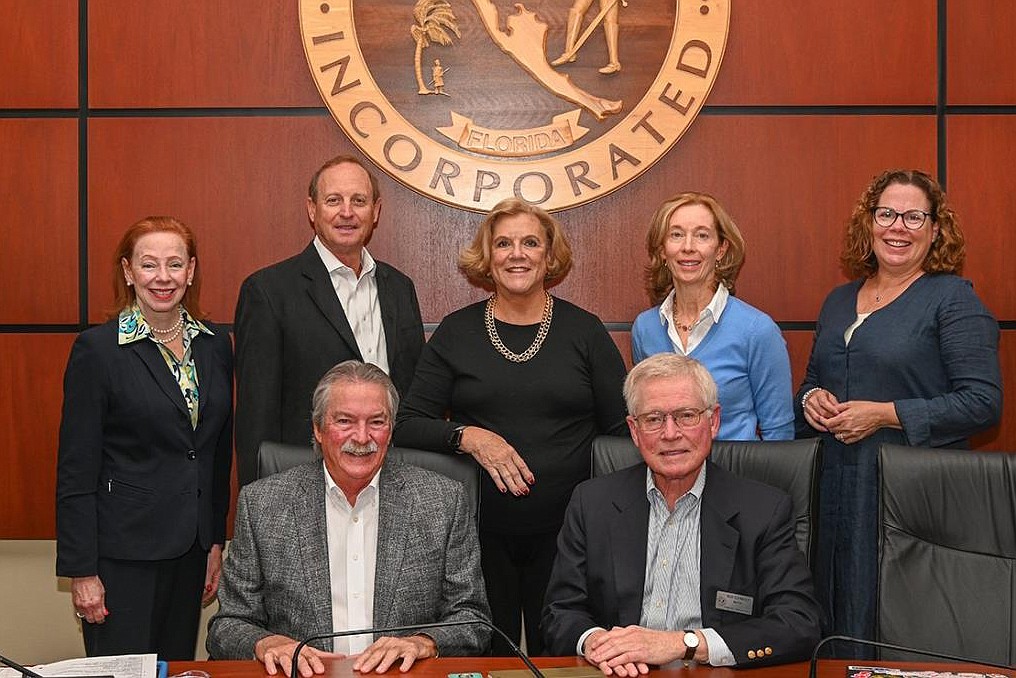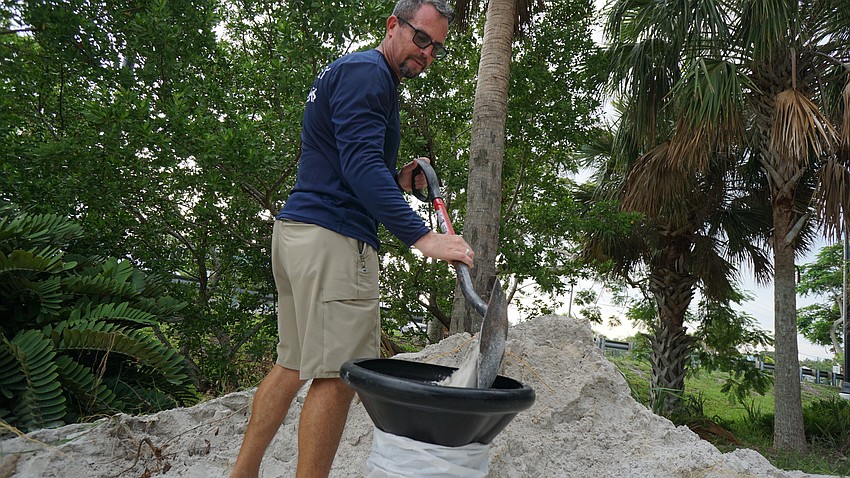- May 8, 2025
-
-
Loading

Loading

This summer was no different from most other Longboat Key summers — fewer tourists, no traffic and high temperatures. Year-round Longboaters don’t mind most of those things, though.
There was also a lack of Town Commission meetings as the commissioners took their usual summer recess starting June 29.
When Longboat Key’s town commissioners return to work Sept. 9, there will be plenty of upcoming projects to keep them busy. From major utility projects to furthering conceptual designs, there are a couple of big things that will be on the commissioners’ to-do list this fall.
The subaqueous wastewater force main project is one that can’t wait any longer.
In 2020, the force main experienced a fracture on the mainland portion of the pipe, which caused a sewer spill. The town completed a slip-line rehabilitation of the mainland portion in May 2023 for $2.72 million, but the portion of the pipe under Sarasota Bay still needs to be replaced.
The price tag for this is $31.4 million.

Construction is slated for fall 2025 but first, to fund the project, the town will need to incur some debt. That debt would be paid back over time by using town utility rates.
At the June 28 commission meeting, commissioners opted to go with the Clean Water State Revolving Fund (SRF) Loan Program as a funding source. The loan would have an annual interest rate of about 2.89% and a total cost of $37.6 million, with a 20-year term and a $1.9 million annual payment.
This loan option presented the lowest interest rate and overall cost but will require a referendum. Voters will have to approve the debt. If the referendum fails to pass, the town would use revenue bonds as the backup option.
The referendum will take place in the March 2025 election, so Town Manager Howard Tipton said the public can expect public hearings this fall for the referendum prior to the vote.
It’s been 20 years since most of Longboat Key’s canals were dredged, and town staff are working on a new maintenance program.
The program was first brought up in November 2023, but a $16.8 million price tag and confusing methodology prompted commissioners to advise staff to resurvey the canals and look for ways to reduce the cost.
In June, Assistant Public Works Director Charlie Mopps was joined by a new firm, First Line Coastal, to present to commissioners the updated canal surveys. With updated data, the cost to get the canals back to baseline was estimated at $9.25 million.

To start the program by dredging canals bit by bit, Tipton and staff recommended assessing a 0.0570 millage to generate $500,000 in Fiscal Year 2025. Commissioners expressed concern over assessing a millage without public outreach beforehand, and the additional millage was taken off of the budget. Staff used $500,000 in reserves to pay for the first batch of dredging this upcoming year.
Tipton said this will come back to commissioners in the fall to further develop a maintenance program and discuss a millage moving forward. Following commission discussions, Tipton said there will be some community meetings in early 2025 to educate the public on the project and the need for the assessment.
The public library on Longboat Key, funded and operated by Sarasota County, is going to happen. Whether the library will include enhancements, though, is still up for debate.
Sarasota County Libraries is covering the bill for the $11.1 million to build the core library, a 10,000-square-foot space on the Town Center Green. There was also the option to include an expanded meeting room for $2 million and a terrace for $1.5 million.

This summer, the Longboat Key Foundation was tasked with fundraising the $3.5 million for the library enhancements. Naming rights were also a possibility if a donor contributed at least 25% of the project cost, or $3.65 million.
However, fundraising over the summer wasn’t easy for the LBK Foundation, and the $3.5 million target wasn’t hit by the original deadline of the end of August.
Tipton said he believes that Sarasota County has a willingness to work with the town on the deadline and can work with an extended timeline for fundraising the $3.5 million.
There have been some positive conversations with donors, according to Tipton, and he thinks there will be more success in the fall because most people are away for the summer.
The Broadway roundabout project, which has been in discussion since 2014, was recently put on pause because of inflated costs.
In June, Brownman updated commissioners on the project’s cost, which was $3 million higher than originally expected.
The original design for the project in 2023 reached 90% completion when the Florida Department of Transportation raised concern over the banking, or elevation, of the roadway. A complete redesign was necessary, costing the town $158,000.
At the June meeting where Brownman updated commissioners on the new design, he said the new design also came with a higher cost estimate of about $5.6 million, which would be closer to $6 million when including construction, engineering and inspection costs. Originally, the town anticipated the project to cost between $2 million to $2.5 million
That said, the town had $2.8 million committed from its own funds, FDOT and Manatee County, but it still wouldn’t be enough for the town to cover the remaining $3 million with the new design.
Commissioners advised Brownman to go back to the FDOT to inquire about resurveys of the roundabout and see if there were possible alternatives, such as a traffic signal. Brownman said he would tell FDOT that the roundabout project has gotten “too big” and out of scale and would return to the commission this fall with updates.
Before the commission left for recess, it heard from Mopps and Al Browder with Olsen Associates about the issues that are mounting for Gulfside Road’s historically erosive beach.
If the pattern continues, the erosion could continue farther up the beach and impact the property owners along the 2,500 feet of Gulfside Road beach. Browder warned that this could lead to a domino effect down the island’s shoreline.
The issue of erosion is naturally occurring, but Browder said that the seawalls on that strip of shoreline — notably the Ohana estate seawall at 6633 Gulf of Mexico Drive — have caused the issue to worsen.

Mopps and Browder told commissioners that, to address the issues, a short-term solution would be an interim beach nourishment that could cost somewhere between $4 million and $4.5 million. Browder also presented an idea for a condensed groin field, though that would have a longer time frame.
The interim beach nourishment will happen this fall, according to a memo from Mopps to Tipton. The project will place about 80,000 cubic yards of sand from the Gulfside Road Public Beach Access to the Ohana estate seawall and will include dune planting.
Bids for the project came in lower than expected, and the lowest responsive bidder was chosen at a price of $2.5 million. This falls within the $2.9 million that the town previously budgeted for the project. At least 27% of the project would be funded by the Florida Department of Environmental Protection as part of a cost-sharing initiative, and there is a possibility that the amount could be higher.
According to Mopps’ memo, mobilization for the project could start in mid-October and last through the rest of 2024 based on a preliminary schedule.